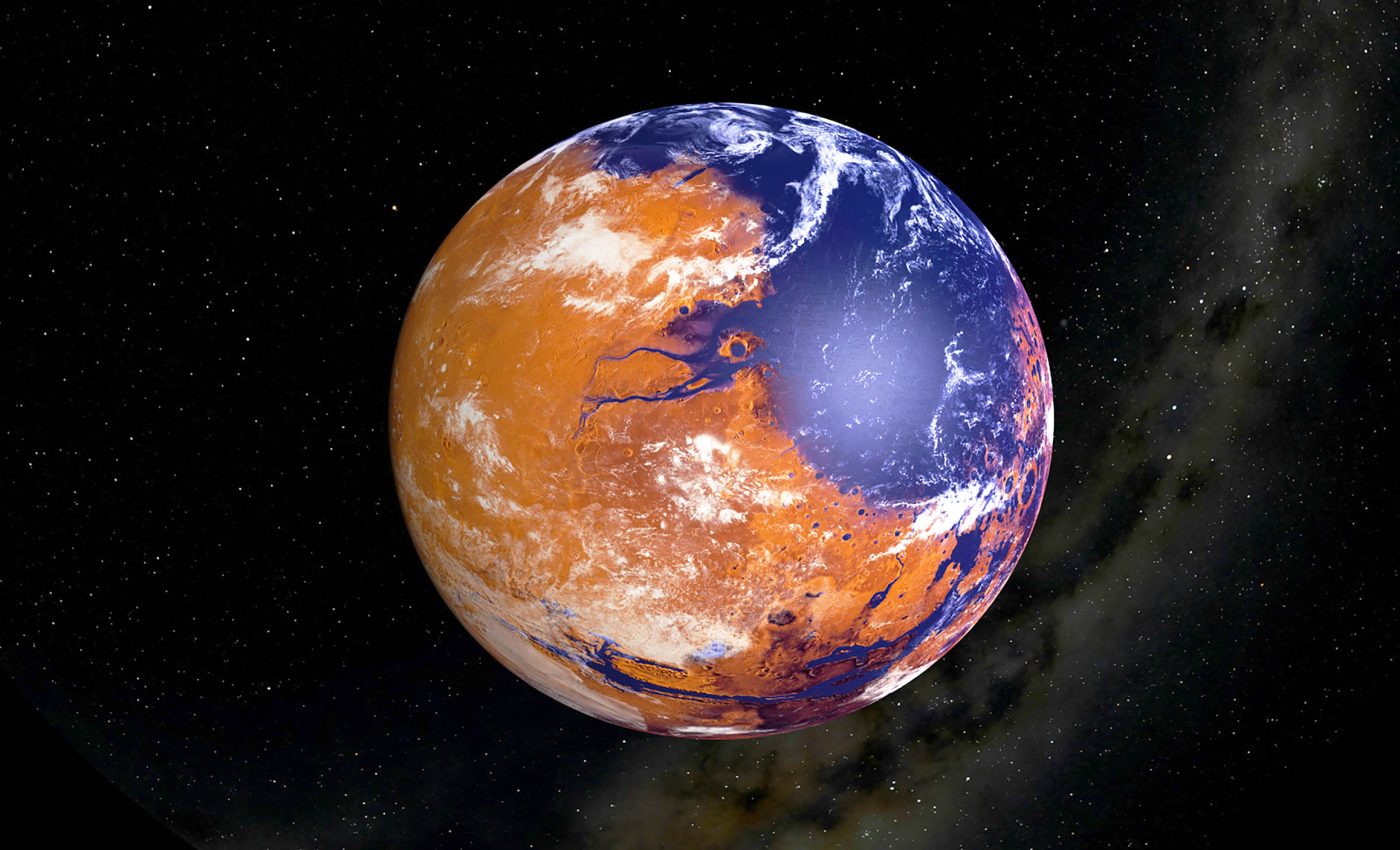
How Mars became uninhabitable after being a water world that could support life
New evidence from NASA’s Curiosity rover shows that Mars experienced a huge climate shift, going from potentially life-friendly, water world conditions that could have supported microbial life to a harsh environment with extreme temperatures and tough atmospheric conditions.
This change brings up fascinating questions about the planet’s past and its chances of hosting life. Curiosity’s findings also help us understand the bigger picture of what life beyond Earth could look like.
Discovering some intriguing facts was none other than David Burtt, a researcher at NASA’s Goddard Space Flight Center.
He along with his team, have let their Curiosity run wild in Gale Crater, a massive basin sprawling 96 miles. Imagine an ancient lake that held crucial keys to unlock Mars’ deep-seated secrets.
Peeking into Mars’ past life potential
Gale Crater is no ordinary pothole. It serves as a unique time capsule, narrating Mars’ ever-changing climatic saga.
Thanks to the layered rocks and sediments, researchers like Burtt get to closely examine the planet’s past.
Carbonates, carbon-rich minerals playing the hero in this Martian tale, have some interesting tales to whisper.
By studying these, scientists are bringing into the limelight the climatic and life-supporting conditions that prevailed when these minerals formed.
Decoding climate stories with isotopes
But what’s so intriguing about these carbonates? Enter isotopes — the unsung heroes of elemental science. These atomic variants, differing in mass, give us a window into environmental shifts over time.
When water evaporates, lighter isotopes put on their invisible cape and sneak into the atmosphere, leaving behind their heavier buddies. As time rolls on, these heavy isotopes find a home in carbonates.
NASA scientists have done a fantastic job of measuring the ratios of these isotopes, giving us a climate diary penned by atoms themselves.
Two roads diverged in Gale Crater
The research paints two plausible scenarios. In the first, the carbonates formed due to wet-dry cycling within the Gale Crater.
Picture water filling and evaporating from the crater, leaving behind a mineral-rich residue, only to start all over again.
The second scenario is slightly more dramatic. Here, the carbonates took shape in extremely salty waters under freezing conditions. Think of brine pools defying low temperatures, dropping mineral deposits as they slowly freeze.
“The formation mechanisms represent vastly different climate regimes, providing different habitability scenarios,” says Jennifer Stern of NASA Goddard, a co-author of the study.
Stern explains that wet-dry cycling indicates fluctuation between more habitable and less habitable environments.
On the contrary, extreme mid-latitude cryogenic temperatures on Mars suggest an inhospitable environment with most water trapped as ice. What little water remains is super salty, not the best cocktail for life as we know it.
Pondering ancient Martian life
And what does this spell for potential life on ancient Mars? The heavy isotope values hint at intense evaporation processes.
As Burtt puts it, “These carbonates likely formed in a climate that could only support transient liquid water.”
While this doesn’t exactly scream “life-friendly,” it doesn’t exclude the possibility of an underground biosphere or even a surface biosphere that lasted before the carbonates formed.
The spotlight here goes to Curiosity’s onboard instruments.
The Sample Analysis at Mars (SAM) instrument and the Tunable Laser Spectrometer (TLS) are like a tag-team of aces on wheels, carrying out experiments from millions of miles away.
They have been crucial in aiding Curiosity’s mission since its touchdown on Mars in 2012.
Why Mars matters
Understanding Mars’ climatic history isn’t just an exercise of cosmic curiosity. It grants us insight into planetary evolution and the prerequisites for life.
If Mars experienced such climatic roller coasters, could Earth be the next on the ride? Peering into our neighboring planet offers valuable lessons for our own world’s future.
Curiosity Rover is not done yet. It’s set on its journey up Mount Sharp, the central peak within Gale Crater, continuously dissecting rock layers representing different chapters of Mars’ history.
Concurrently, future missions like NASA’s Perseverance Rover are combing Mars for signs of life that may have existed, gathering samples that might be safely returned to Earth someday.
Life on Mars? The search continues
To sum it all up, these findings bring us a step closer to solving Mars’ climatic puzzle.
As we comprehend Mars’ environmental evolution, we’re inching closer to answering the million-dollar question: Could Mars have ever hosted life?
Our sleuthing suggests that while the surface might not have been life-friendly, the possibility of life existing underground or in earlier periods keeps the door ajar.
—–
Like what you read? Subscribe to our newsletter for engaging articles, exclusive content, and the latest updates.
Check us out on EarthSnap, a free app brought to you by Eric Ralls and Earth.com.
—–













